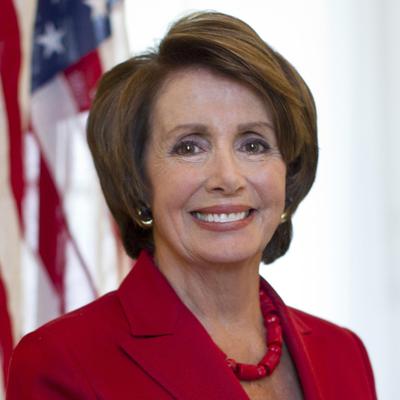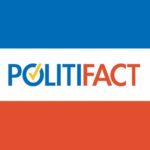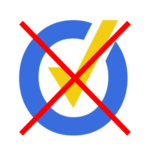“(W)e wanted permanent CHIP, which, by the way, saves $6 billion.”
—Nancy Pelosi, from a Jan. 18, 2018 press conference
“CBO analyses back up Pelosi’s numbers. Because the reauthorization of CHIP would essentially take the place of more expensive programs, doing so would eventually net savings for the government. We rate her statement True.
—PolitiFact, from a Jan. 24, 2018 fact check of Pelosi’s Jan. 18, 2018 claim.
Overview
“Savings” from CHIP reauthorization result from higher government revenue, not from the relative efficiency of delivering CHIP services. A CBO statement backs up Pelosi’s claim, but CBO analyses undercut it.
Background Facts
On Jan. 18, 2018, House Minority Leader Nancy Pelosi gave a press conference addressing the funding situation for the Children’s Health Insurance Program. Pelosi said reauthorizing CHIP for 10 years would save $6 billion:
You know, this CHIP should have been done in September, first of all. Second of all, we wanted 10 years, we wanted permanent CHIP, which, by the way, saves $6 billion.
The Republicans rejected that. Even just on the terms of CHIP, they rejected the 10 year saving $6 billion. Doing it for 6 years saves $1 billion. That’s good. Doing it 10 years saving $6 billion is better; in fact, it’s best.
How does spending money on a government program save money? PolitiFact fact checked Pelosi’s claim about CHIP savings and hinted at some initial skepticism:
We were struck by Pelosi’s claim that a federal program to provide health coverage for 8.9 million children and pregnant women could actually save the government money, rather than costing it. So we took a closer look.
PolitiFact found information from the Congressional Budget Office appearing to fully support Pelosi’s claim, so PolitiFact rated it “True”:
Pelosi said that reauthorizing the Children’s Health Insurance Program “for six years saves $1 billion” and that doing it for 10 years saves $6 billion.
CBO analyses back up Pelosi’s numbers. Because CHIP reauthorization would essentially take the place of more expensive programs, doing so would eventually net savings for the government. We rate her statement True.
Upon looking at the source material for CBO’s claim, we found evidence it was misleading. So we took a closer look.
Analysis
The primary key to PolitiFact’s “True” finding came from a Jan. 11, 2018 response letter CBO director Keith Hall sent to Rep. Frank Pallone Jr (D-N.J). Hall’s explanation of the savings derived from CHIP reauthorization jibed well with Pelosi’s statement, though Hall’s version included the qualifier “net” modifying the type of savings:
Extending funding for CHIP for 10 years yields net savings to the federal government because the federal costs of the alternatives to providing coverage through CHIP (primarily Medicaid, subsidized coverage in the marketplaces, and employment-based insurance) are larger than the costs of providing coverage through CHIP during that period. The extension would increase the deficit in each year between 2018 and 2020 and reduce the deficit each year thereafter. The change from annual increases in the deficit to decreases over the 2021-2027 period primarily occurs because the federal matching rate for CHIP would decline relative to its level in prior years—from an average of 93 percent in 2019 to 81.5 percent in 2020 and 70 percent in 2021 and subsequent years—lowering the federal costs of coverage through CHIP as states become responsible for more of the progam’s [sic] costs.
Hall’s letter featured a CBO chart breaking down the finances. The chart shows the CHIP funding legislation would increase outlays by $6.9 billion and increase revenue by $12.9 billion. The difference, $6 billion, matches Pelosi’s savings claim.
Is it proper to count revenues, which apparently come from the pockets of taxpayers, as savings? If a legislator devised a tax bill raising $20 million in revenue from taxpayers, could one legitimately advertise that as a bill designed to save the government money?
Where does the $12.9 billion come from?
We think CBO, its chart excepted, did a poor job of communicating the role of revenues in allowing the CHIP reauthorization bill to lower the deficit by $6 billion over 10 years.
Hall specifically mentioned the cost of “employment-based insurance” when he apparently extolled the comparatively low cost of CHIP-sponsored health care. But CBO’s chart shows employment-based insurance only as a source of revenue under the reauthorization bill. In fact, the chart attributes $11.2 billion of the $12.9 billion raised under the bill to “Employment-based insurance.”
We asked CBO and a Congressional Research Service researcher for clarification but received no response in time for inclusion with our fact check. We will update our fact check if we detect any response.
We did find a CBO report describing how renewing CHIP could increase government revenue. On Oct. 20, 2017, CBO reported on a five-year reauthorization of CHIP. CBO said employment-based insurance contributed to revenue because CHIP beneficiaries may drop employment-based coverage:
About 25 percent would participate in employment-based health insurance under current law, because some parents with offers of family coverage through an employer will choose to enroll their children in such plans. Under S. 1827, CBO and JCT estimate that revenues would be $3.8 billion higher over the 2018-2027 period because parents who would no longer enroll their children in health insurance through their employer would receive less of their income in nontaxable health benefits and more in taxable wages.
With CHIP reauthorized, CBO said about 25 percent of the families receiving the benefit would forego the employment-based insurance they would have sought if CHIP funding lapsed. And receiving the subsidized insurance would indirectly increase their taxable income. The government, in turn, would get more revenue as it taxed that income.
The same process that generates $3.8 billion in revenue for the five-year CHIP reauthorization plan from September 2017 would largely explain the revenue for the 10-year reauthorization. The 10-year reauthorization plan shows a projected $4.2 billion in revenue over the first five years.
“Savings” or “net savings”?
In PolitiFact’s view, it represents savings if the government’s boost in taxes from CHIP reauthorization outweighs the increased cost of paying for CHIP. PolitiFact made clear its awareness of CHIP revenue with its evaluation of the six-year renewal bill (bold emphasis added) that Congress passed:
CBO said that a six-year CHIP reauthorization would produce an additional $8.204 billion in revenue, but only $7.223 billion in additional costs. That means a cumulative savings of $981 million, or nearly $1 billion.
The left-leaning Tax Policy Center explains the tax exemption for employment-based insurance (bold emphasis added):
Employer-paid premiums for health insurance are exempt from federal income and payroll taxes. Additionally, the portion of premiums paid by employees is typically excluded from taxable income as well. The exclusion of premiums lowers most workers’ tax bills and thus reduces their after-tax cost of coverage.
PolitiFact’s description makes little sense. This is not CHIP essentially taking the place of more expensive programs. This is CHIP covering more people and making up the extra expense by taxing a group of the beneficiaries. In effect, the tax revenue takes back part of their subsidy. PolitiFact’s fact-finding should have vindicated its initial skepticism about Pelosi’s claim.
Calling the CBO’s lower deficit projection “savings” misleads unless one adds a term like “net.” “Net savings” communicates a mix of outlays and revenues. “Savings” by itself implies only a lowering of costs. PolitiFact magnified that misleading implication by relying on one key quotation from CBO’s report.
Summary
“(W)e wanted permanent CHIP, which, by the way, saves $6 billion.”
Taking “permanent CHIP” as 10-year CHIP reauthorization, we fault Pelosi for ambiguous and misleading communication for claiming $6 billion in savings. The 10-year CHIP bill would have “saved” $6 billion in deficit growth, but not by the implied method of cost cutting.
![]()
![]()
![]()
“CBO analyses back up Pelosi’s numbers.”
CBO backs Pelosi’s numbers but not her implied reasoning.
![]()
![]()
![]()
“Because the reauthorization of CHIP would essentially take the place of more expensive programs, doing so would eventually net savings for the government.”
Though this claim from PolitiFact closely mirrors a statement from CBO, we count it as the most misleading in the group we examined. A sentence like “Because CHIP reauthorization results in added tax revenue, the bill more than offsets the added costs of covering more people with health insurance” would better communicate the mechanics of the bill. PolitiFact’s wording misleads its audience. The statement is true only if granted the maximum charitable interpretation.
![]()
![]()
![]()
Reference material
Pelosi, Nancy. “Transcript of Pelosi Press Conference Today.” Congresswoman Nancy Pelosi, U.S. Congress, 19 Jan. 2018.
Jacobson, Louis, “Pelosi Right That Renewing Kids’ Health Program Saves Money.” PolitiFact.com, Tampa Bay Times, 24 Jan. 2018.
Hall, Keith. “Re: Cost Estimate of Extending Funding for the Children’s Health Insurance Program for 10 Years.” CBO.gov, U.S. Congress, 11 Jan. 2018.
King, Emily, et al. “Congressional Budget Office Cost Estimate S. 1827 Keep Kids’ Insurance Dependable and Secure Act of 2017.” CBO.gov, United States Congress, 20 Oct. 2017.
White, Bryan W. “CBO Explains CHIP Revenue?” Zebra Fact Check, Zebra Fact Check, 25 Jan. 2018.
White, Bryan W. “Inquiry Sent to Alison Mitchell of the Congressional Research Service.” Zebra Fact Check, Zebra Fact Check, 2 Feb. 2018
“How Does the Tax Exclusion for Employer-Sponsored Health Insurance Work?” Tax Policy Center, Urban Institute & Brookings Institution, Web, Feb. 3, 2018.






